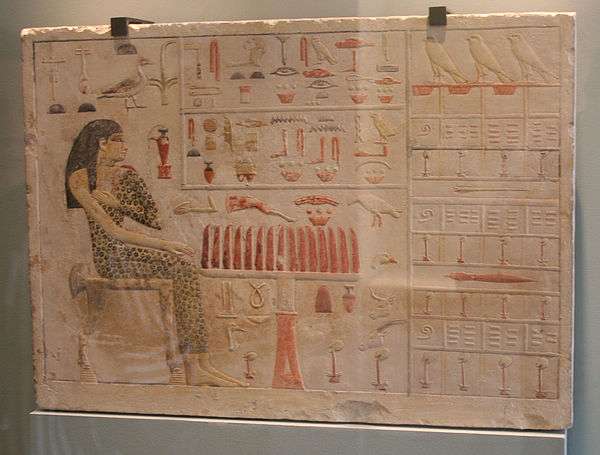Nefertiabet
| Nefertiabet in hieroglyphs | ||||
|---|---|---|---|---|
| ||||
 Nefertiabet, stela | ||||
| Nefertiabet | |
|---|---|
| Born | Nefertiabet |
| Occupation | Princess of Egypt |
| Religion | Ancient Egyptian religion |
| Parent(s) | Possibly Khufu |
Nefertiabet (nfr.t ỉ3b.t; "Beautiful One of the East") was an ancient Egyptian princess of the 4th dynasty. She was possibly a daughter of Pharaoh Khufu.
Tomb
Her tomb at Giza is known (G 1225). The mastaba is about 24.25 x 11.05 m. in size.
A statue of her, now in Munich, probably originates from her tomb. She is best known from her beautiful slab stela, now in the Louvre.[1] Nefertiabet is shown seated facing to right. She is depicted with a long wig and a panther skin garment. Her right hand is extended to table. A table in front of her is piled with bread. Under the table offerings are depicted including linen and ointment on the left, and on the right offerings of bread, beer, oryx, and bull. On the right of the slab a linen list is depicted.[2]
The tomb originally contained one shaft which contained the burial of Nefertiabet. The shaft contains a passage and a chamber. Fragments of a white limestone coffin with a flat lid were found. A canopic pit had been dug in one of the corners of the chamber. The chamber contained some bowls and jars. An annex with one additional burial shaft was added later, but was completely plundered.[2]

Sources
| Wikimedia Commons has media related to Nefertiabet. |